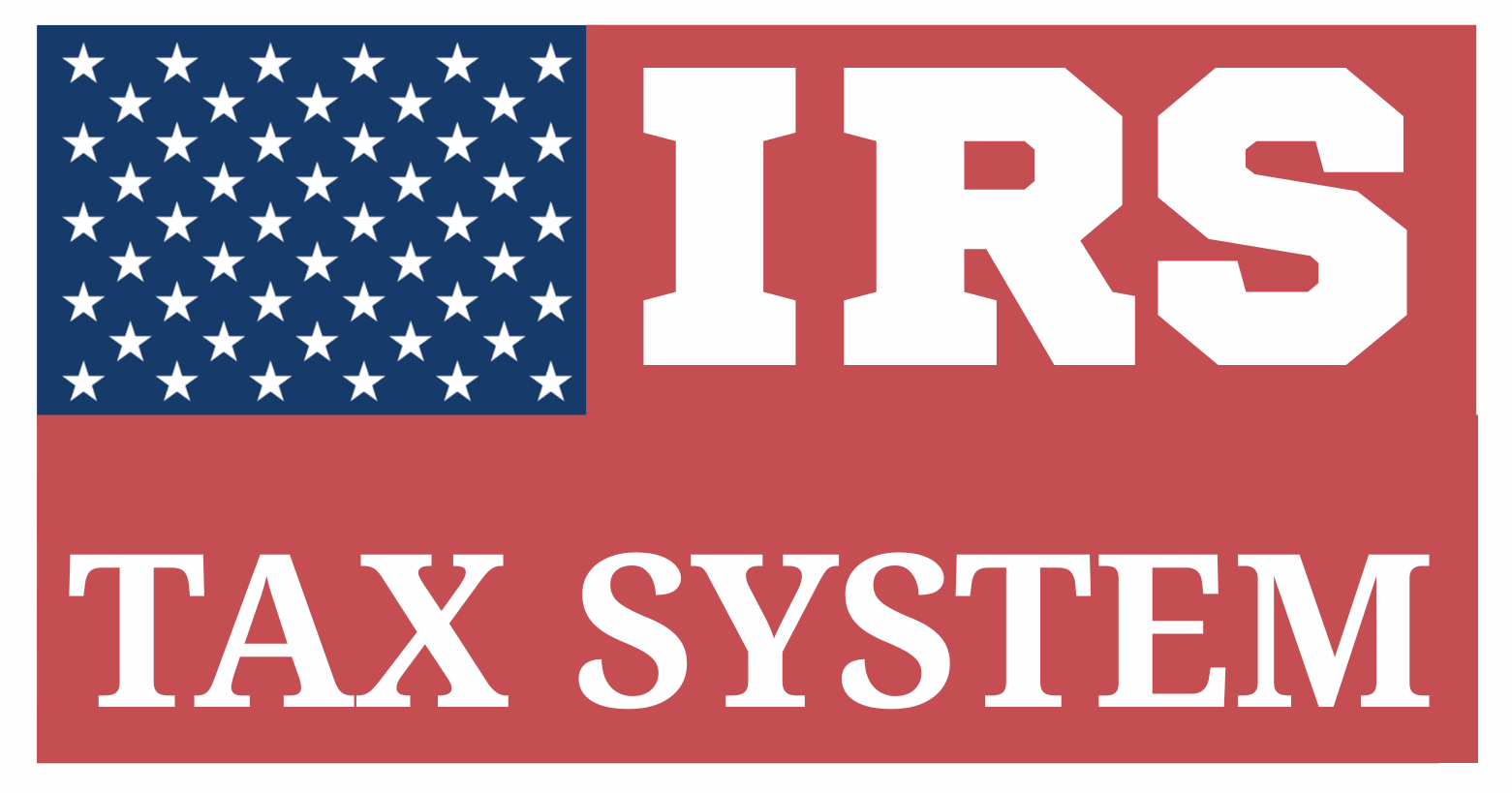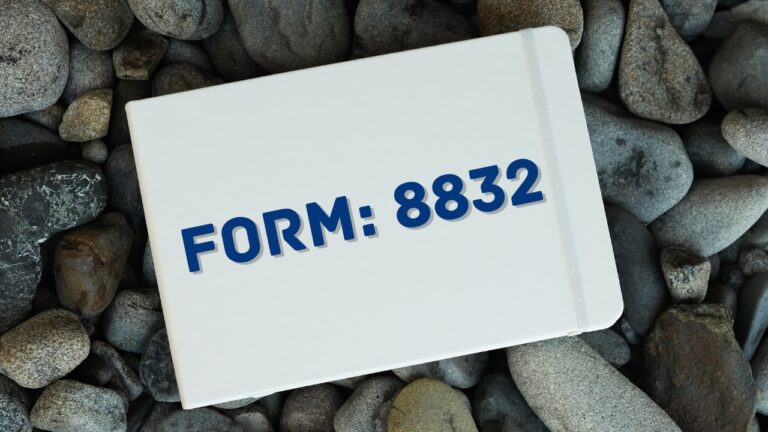Passive Foreign Investment Company (PFIC): Best Explained
Table of Contents
A Complete Article On Passive Foreign Investment Company (PFIC)

A Passive Foreign Investment Company (PFIC) is essentially a foreign corporation whose income or assets are predominantly passive. Under IRS rules, a foreign fund or corporation is a PFIC if either 75% or more of its gross income for the year is passive (e.g. dividends, interest, capital gains, rents, royalties) or at least 50% of its assets produce passive income.
In plain terms, most non-U.S Investment structures such as mutual funds, hedge funds, pooled vehicles, foreign exchange-traded funds (ETFs), and offshore trusts generally meet these standards, whereas operating businesses—like overseas manufacturing plants or retail outlets—typically do not. The PFIC rules were created to close loopholes and discourage deferral of U.S. tax on foreign passive investments. U.S. taxpayers who invest in such foreign
Typical PFIC examples include offshore mutual funds and exchange-traded funds (ETFs) that are domiciled outside the United States. (e.g. a Europe-based index fund), offshore hedge funds, and foreign pooled investment trusts. If you buy shares of a Luxembourg fund or a UK mutual fund, it will almost certainly count as a PFIC. In fact, nearly any foreign collective investment vehicle (pension plan holdings, insurance-backed funds, etc.) is treated as a PFIC under U.S. law.
Passive Foreign Investment Company (PFIC) Rules
The PFIC rules, outlined under IRC Sections 1291 through 1298, are anti-deferral tax provisions that apply to U.S. individuals and entities holding interests in Passive Foreign Investment Companies. The rules were enacted to prevent U.S. taxpayers from Postponing U.S. tax obligations by placing funds in overseas entities that mainly generate passive income, including dividends, interest, or capital gains.
1. Legal Basis of PFIC Rules
The PFIC regime was introduced under the Tax Reform Act of 1986. It complements other international tax regimes like Subpart F and GILTI, targeting foreign corporations with passive characteristics. The rules apply regardless of the percentage of ownership held by the U.S. person.
- IRC §1291: Governs excess distribution treatment.
- IRC §1293: Governs Qualified Electing Fund (QEF) regime.
- IRC §1296: Governs Mark-to-Market (MTM) regime.
- IRC §1298: Contains attribution and stock ownership rules.
2. PFIC Qualification Tests
A foreign company is known as PFIC for a tax year if it satisfies either the income test or the asset test outlined by U.S. tax regulations.
a. Income Test
- If 75% or more of the corporation’s gross income is passive, the entity is a PFIC.
- Passive income generally consists of earnings such as dividends, interest, royalties, rental income, annuities, and profits from the sale of assets..
b. Asset Test
- A corporation is considered a PFIC for any tax year in which at least 50% of its average assets generate or are intended to generate passive income.
Since the tests are applied each year, PFIC status can vary from year to year.
3. PFIC Taxation Regimes
The PFIC rules provide three tax regimes that determine how income from a PFIC is taxed:
a. Default Regime – Excess Distribution Rules (§1291)
In the absence of a specific election, the standard PFIC taxation rules will automatically take effect.
- Any “excess distribution” (including gain from sale of PFIC shares) is allocated across each year the stock was held.
- Taxes are imposed at the highest marginal rate for each prior year.
- Interest charges apply to simulate the cost of deferral.
Example
A $10,000 gain from selling PFIC stock after 5 years is allocated across all years and taxed with interest, potentially pushing effective tax rates above 50%.
b. Qualified Electing Fund (QEF) Regime (§1293)
Shareholders can elect QEF treatment if the PFIC provides annual information.
- Must include a pro-rata share of the PFIC’s earnings and net capital gains annually in U.S. income, whether or not distributed.
- Provides capital gain treatment upon sale if the QEF election was in effect for the entire holding period.
- Requires PFIC to issue a PFIC Annual Information Statement.
Note: Most PFICs (especially foreign mutual funds) do not provide QEF information, making this election difficult.
c. Mark-to-Market (MTM) Regime (§1296)
If PFIC stock is marketable then its available(i.e., traded on a qualified exchange).
- Stock is treated at fair market value which got sold by the end of the year.
- Unrealized gains are included in income and taxed as ordinary income.
- Losses are deductible to the extent of previously recognized gains.
This election avoids interest charges and the complexity of excess distribution rules.
4. Attribution Rules and Indirect Ownership
Under IRC §1298, PFIC rules apply to both direct and indirect shareholders:
- Indirect ownership through foreign partnerships, corporations, or trusts may still result in PFIC classification.
- The ownership attribution rules are broad and complex.
- FIC rules can apply even to minimal investments in foreign mutual funds, regardless of the size of the ownership stake.
5. Interaction with Other International Tax Regimes
PFIC rules can interact or overlap with Controlled Foreign Corporation (CFC) rules:
| Criteria | PFIC | CFC |
| Basis | Income/Asset | U.S. ownership > 50% |
| Reporting Form | 8621 | 5471 |
| Applies Regardless of Ownership? | Yes | No (only for 10%+ U.S. shareholders) |
| Primary Purpose | Prevent tax deferral from passive income | Prevent profit shifting and deferral in controlled entities |
If a corporation qualifies as both a PFIC and a CFC, special coordination rules apply (e.g., “CFC overlap rule”), and the CFC rules may take precedence for certain U.S. shareholders.
7. Exceptions and Relief
Start-Up Exception
- A start-up company is not a PFIC during its first year if it is not yet producing significant active income or assets.
Change in Status
- Once a company becomes a PFIC, it retains that status for all future years unless it can prove it no longer meets the tests (the “once a PFIC, always a PFIC” rule was repealed in 1997, but residual effects still apply in many cases).
De Minimis Rule
- In rare cases, small distributions may fall below the excess distribution threshold and avoid harsh tax treatment.
8. Practical Examples of PFICs
Common investments that may qualify as PFICs:
- Foreign mutual funds or ETFs (not SEC-registered)
- Offshore life insurance wrappers
- Foreign holding companies
- Offshore private equity or hedge funds that primarily hold passive investments often fall under PFIC classification.
PFIC Forms
Form 8621: Who Must File (Filing Triggers)
Any U.S. individual or entity with direct or indirect ownership in PFIC shares is required to file Form 8621 if specific events, such as distributions or certain transactions, take place during the tax year.
- Receipt of PFIC Distribution: You receive a dividend or other distribution, either directly or indirectly, from a Passive Foreign Investment Company..
- Sale of PFIC Stock: You sell or otherwise dispose of PFIC stock (recognizing gain).
- QEF or Mark-to-Market Election Reporting: You elect to report income using either the Qualified Electing Fund (QEF) method or the mark-to-market rules under IRC Section 1296.
- Making a PFIC Election: You make a PFIC election (such as a new QEF or MTM election) in that year.
- Annual Report Rule (Sec.1298(f)): You are otherwise required to file an annual report under section 1298(f). (In practice, this means filing an informational return whenever any PFIC events occur.)
These rules apply even for indirect ownership. For example, if you own shares in a U.S. corporation or partnership that in turn owns PFIC stock, you may be treated as an indirect PFIC shareholder and must file Form 8621 (if you meet the above triggers). Note that if a PFIC is owned through a tax-exempt entity or certain retirement plans, those owners may be exempt (see IRS rules).
If you have an ownership “chain” of multiple PFICs, you generally file one 8621 for each PFIC in the chain. You can combine multiple reporting requirements (QEF income, distributions, elections, etc.) on the same form for the same PFIC, but you cannot list more than one PFIC on one form.
De Minimis Exceptions
There are two key exceptions (de minimis rules) that can exempt a shareholder from filing Form 8621:
- $25,000 exception ($50,000 MFJ): If the aggregate value of all your PFIC stock (direct and indirect) is $25,000 or less on the last day of the tax year ($50,000 for married filing jointly) and you did not receive any excess distribution or recognize any gain on PFIC stock that year, then Part I of Form 8621 is not required. In simple terms, if your PFIC holdings are very small and no distributions or sales occurred, you can skip the form.
- $5,000 indirect exception: If PFIC stock is held through another PFIC, there is an even smaller $5,000 threshold for the indirect position, under similar “no distributions or gain” conditions.
Above these thresholds, any PFIC distribution or sale obligates filing. Even if no events occur, you may still need to file if your PFIC holdings exceed the $25K/$50K limit.
Form 8621: When and How to File
Due Date: It must be attached to your Form 1040 (or corporate return, partnership return, etc.) and submitted by the regular due date (usually April 15), including extensions. If you are granted an extension, attach the form when you file the extension return. In other words, Form 8621 follows the same timeline as your main tax return.
Mailing Address: If you have no other tax return to file (for instance, a foreign person with only PFIC income), you must mail Form 8621 on paper to the IRS Ogden, UT address.
Electronic Filing: The IRS does not currently provide a straightforward e-file format for Form 8621 in consumer software. Major DIY programs (like TurboTax) typically cannot prepare or attach Form 8621 directly. In practice, taxpayers using such software must either: (a) seek a paid preparer who can include Form 8621 in a professionally e-filed return, or (b) mail a printed Form 8621 with a paper return. (For example, TurboTax community answers state that if the software doesn’t support 8621, one should mail it with a paper return.)
In summary, your options are: e-file through a tax professional or tax software that supports PFICs, or prepare and print and mail the completed Form 8621 with your return. When mailing, use the proper Attachment Sequence Number (for individuals, 69) and include any required statements (e.g. for Elections D/E).
| Event | Reporting Required |
| You received a distribution | Yes |
| You recognized a gain from sale or disposition | Yes |
| You elected QEF or MTM treatment | Yes |
| You are treated as making an indirect disposition (e.g., foreign merger) | Yes |
| You are a direct or indirect shareholder and wish to make a QEF or MTM election | Yes |
| Passive income is allocated to your holding (even if not distributed) | Yes |
How to Complete Form 8621 (Step-by-Step)
Form 8621 is structured into six parts. Here is a guided overview of each part and the key items to complete:
Part I – PFIC Summary
Provide basic information about the PFIC and your holdings:
- Identify the PFIC by name, address, and Employer ID (if any).
- The PFIC must be classified based on the applicable election—either as a “Section 1291 fund” when no QEF or mark-to-market election is made, or as a “QEF” if the Qualified Electing Fund election applies.
- Report the number and class of shares you hold, date acquired, and their value in U.S. dollars at year-end.
- Report the amount of any distributions or gains. Specifically, show the amount of any excess distribution or gain treated as an excess distribution (per section 1291 rules), any QEF inclusions, and any mark-to-market gain or loss for the year. (If no amounts, enter zeroes.)
Part II – Elections
Check the box for any PFIC elections made or claimed during the year. The main elections are:
- Election A (QEF Election): Check box A if you are electing to treat the PFIC as a Qualified Electing Fund. This implies that you must report and pay tax on your portion of the PFIC’s yearly income, even if no distributions are received. (If you had a QEF election in prior years, you would have already checked this and made it effective.).
- Election B (Tax Deferral Under QEF): Select box B if you’ve made a QEF election and are choosing to postpone paying tax on the fund’s undistributed income until the QEF status ends—an option that’s uncommon for individual taxpayers.
- Election C (Mark-to-Market): Check box C if you are electing to mark-to-market section 1296. This applies only if the PFIC stock is “marketable” (e.g. regularly traded on a qualified exchange). A MTM election requires that you include yearly gains or losses instead of the excess distribution method.
- Election D (Deemed Sale on PFIC to QEF): If you are making a QEF election after holding PFIC stock unqualifiedly, you may make a “deemed sale” to purge prior PFIC status. Checking box D triggers a one-time gain (if any) treated as an excess distribution. (See instructions for details.).
- Election E (Deemed Dividend for QEF/CFC): If the PFIC is also a CFC and you elect QEF after its first PFIC year, you may elect to treat undistributed earnings as a deemed dividend. Check box E if doing this.
- Election F (Deemed Sale for Former PFIC): In a rare case where a foreign corporation ceases to be a PFIC (or was a PFIC before you acquired it), you can elect to treat it as sold at fair market value. Check box F if applicable.
Only check the election box(es) for the options you are actually making that year. For example, a first-time QEF election would use box A (plus possibly D/E as above). A newly filed mark-to-market election uses box C.
Part III – Income from QEF
If you made or maintained a QEF election, you must report your pro-rata share of the PFIC’s earnings. Lines 6 and 7: Report your portion of the PFIC’s ordinary income and net capital gains for the year, based on information provided by the fund. These amounts will be taxed as per the usual income and long-term capital gains on the return. Attach the foreign corporation’s QEF annual information statement.
Part IV – Gain/Loss from Mark-to-Market
If you checked the MTM election (box C in Part II), use Part IV to compute the mark-to-market inclusion or deduction. Lines 10–12 capture your year-end gain (or allowable loss) from the increase (or decrease) in the PFIC’s market price over your adjusted basis. Essentially, this treats the PFIC shares as if sold at year-end.
Part V – Distributions and Dispositions (Default Tax)
If you have an un-elected PFIC (section 1291 fund) or unpedigreed QEF, use Part V. Use this section to disclose any excess distributions or recognized gains that fall under the special PFIC taxation rules. Enter the total excess distribution/gain, allocate it over your holding period (as per IRS rules), and compute the tax and interest. Lines 14–16 walk through this calculation. (If you made a deemed sale election, you will also report that on Part V.)
Part VI – Status of Prior Elections
This part lists whether you had a previous QEF or MTM election in effect, or if the QEF election ended. It is mostly checkboxes confirming your PFIC’s prior tax status.
Filing Tips: Always attach all required statements. For example, if you made a QEF election late, include a “protective statement” or the necessary calculations. If you’ve elected to treat the PFIC as having paid a deemed dividend (Election E), be sure to include a worksheet detailing post-1986 earnings and profits. The IRS instructions for Form 8621 detail each part; carefully follow line instructions and attach any foreign tax documents given by the PFIC.
| Part | Description |
| Part I | General information about the shareholder and PFIC |
| Part II | Elections (QEF, MTM, and purging elections like deemed sale or deemed dividend) |
| Part III | QEF income inclusion (ordinary earnings and net capital gains) |
| Part IV | Gain/loss on disposition of PFIC stock under Section 1291 rules |
| Part V | Excess distributions under default PFIC rules |
| Part VI | Annual mark-to-market gain/loss recognition under Section 1296 |
Common Scenarios Triggering Form 8621
The following real-world examples illustrate when Form 8621 is typically required:
- Foreign Mutual Funds/ETFs: If you invest in a foreign-domiciled mutual fund or ETF, that fund is almost certainly a PFIC. For instance, a U.S. person holding shares in an Irish or Cayman Islands fund would file 8621 annually. The PFIC designation applies regardless of whether the fund holds U.S. stocks; the mere fact it is a foreign fund makes it “passive” by IRS rules.
- Foreign Hedge/Pooled Funds: Investments in offshore hedge funds or private equity funds typically meet the PFIC tests (passive income/assets). Owning such shares or units triggers Form 8621 filing and potential QEF elections.
- Foreign Individual Stock with Mostly Passive Business: Owning stock of a foreign corporation can be PFIC if that corporation’s income is largely passive. For instance, acquiring shares in a foreign real estate company or an offshore investment holding entity could trigger Form 8621 filing requirements(Active foreign companies with >25% active business generally avoid PFIC status.)
- Pension Plans with Underlying PFICs: Some foreign retirement accounts or pension plans invest via PFIC funds. In many cases, Under U.S. tax rules, each fund within the investment plan that qualifies as a PFIC must be reported separately, necessitating a distinct Form 8621 filing for every such holding. Even Without Income: Remember, you must file Form 8621 even if the PFIC paid no distribution. Simply holding PFIC stock (above the threshold) compels filing if any of the five triggers occur (e.g. if you made an election or disposed of shares).
Example: “I own a foreign mutual fund.” A U.S. citizen buys an international index fund in a foreign country. Because it’s a foreign pooled vehicle, it’s a PFIC. Even if no dividends were paid, the investor must check whether any PFIC conditions apply (e.g. making a QEF election, or if they sell shares). Almost certainly, they must file Form 8621 each year for that fund..
Other Related Forms That May Apply
Although Form 8621 is the core PFIC form, PFIC reporting may overlap with or trigger additional filing requirements depending on the investment structure:
| Form | Purpose | When Required |
| Form 8938 | Used to disclose specified foreign financial assets, including PFICs | when their total value exceeds $50,000 for individuals ($100,000 for joint filers). |
| FinCEN Form 114 (FBAR) | Report foreign bank and financial accounts | Required if PFIC shares are held in foreign financial accounts and the combined value of all such accounts exceeds $10,000 at any point during the year. |
| Form 5471 | U.S. persons owning 10%+ in a foreign corporation | If PFIC is also a controlled foreign corporation (CFC) |
| Form 1040 | U.S. Individual Income Tax Return | Attach Form 8621 here for individuals |
| Form 1065 / 1120 / 1041 | For partnerships, corporations, or trusts | Attach Form 8621 at entity level if entity owns PFIC shares |
Interplay with Other IRS Forms
PFIC reporting on Form 8621 often overlaps with other international forms:
- Form 8938 (FATCA): PFIC interests are specified foreign financial assets. Generally, you report foreign funds on Form 8938 if you meet the reporting threshold. If you’ve already disclosed a PFIC on Form 8621, you may classify it as an “excepted” asset on Form 8938 by checking the appropriate box in Part IV, indicating that the asset has been reported elsewhere indicating that the specified foreign financial assets are reported elsewhere, and provide the total number of Form 8621 filings submitted.
- This avoids double-reporting the same investment on both forms. (Note: You may still face FATCA penalties if you fail to list large PFIC holdings on 8938 when required.)
- FinCEN Form 114 (FBAR): If your PFIC investment is held in a foreign bank or brokerage account, that account’s value counts toward the FBAR $10,000 filing threshold. For example, if you have a foreign stock brokerage account containing a PFIC fund, you must file an FBAR for that account if its balance ever exceeds $10,000. Penalties for missing an FBAR can be severe (typically starting at $10,000 per year). Form 8621 itself does not replace the FBAR requirement.
- Form 5471 (CFC Reporting): Some foreign corporations are both PFICs and Controlled Foreign Corporations. The IRS provides a “CFC/PFIC overlap” rule to prevent double-taxation. In practice, if you are a 10%+ owner of a CFC-PFIC and you already include its subpart F income on Form 5471, you are generally not taxed again as a PFIC with respect to the same income earned during the corresponding timeframe.
- Certain guidance suggests that when a foreign fund qualifies as a CFC, one might rely on Form 5471 instead of 8621. Nevertheless, in most cases you should file both forms if both rules apply — the 8621 for PFIC purposes and 5471 for CFC purposes. Each form reports different information (PFIC distributions vs. subpart F inclusions). (This is a complex area; taxpayers often consult specialists when a PFIC is also a CFC.).
PFIC Reporting
- Submit Form 8621 along with your federal income tax return by the standard filing deadline, including any granted extensions.
- Attach Form 8621 to your tax return, or file it separately if you are not otherwise required to file a return.
Failure to file Form 8621 prevents the statute of limitations from beginning, allowing the IRS to audit that tax year at any time in the future.
Penalties for Non-Compliance
Form 8621 is an information return with no direct penalty solely for not filing it. However, failing to file when required has serious consequences. Not filing Form 8621 leaves your entire tax return open to audit indefinitely; any PFIC tax deficiencies will remain collectible because the statute of limitations never closed. In practice, the biggest penalties often come from related violations:
- Form 8938 Penalty: If you fail to report PFIC stock on Form 8938 when required (and it isn’t properly marked as excepted), the penalty is $10,000 for the initial failure, A penalty of $10,000 may be imposed for each 30-day period of continued noncompliance following notification, with total penalties capped at $60,000.
- FBAR Penalty: Failure to file an FBAR for a foreign account holding PFICs incurs a $10,000 per year penalty (for non-willful violations). The maximum for willful failure can be much higher.
- Accuracy-Related Penalty: If PFIC income is understated due to non-disclosure, the normal 20%–40% accuracy penalties may apply. For example, failing to report excess distributions on Form 8621 or related forms could trigger a 40% penalty on the underpayment.
- Interest: Any unpaid tax on PFIC excess distributions or elections accrues interest from the original due date until paid.
In short, while there’s no “late filing penalty” code for Form 8621 itself, the risks of not filing are high. The IRS emphasizes that “most taxpayers will choose to file this form” rather than remain noncompliant, because missing it can lead to far greater costs later.
Current Filing Notes and Exceptions
- Electronic Filing: As of 2025, IRS does not require a paper-only rule, but many software packages lack an e-file option for Form 8621. Taxpayers who must file Form 8621 often end up printing it with their paper return, or using a professional preparer with e-filing capability.
- Extensions: You can file Form 8621 under an extension along with your tax return. If making an election (QEF, MTM, deemed sale) that year, attach the form by the extended due date.
- Recordkeeping: U.S. shareholders should keep detailed records of PFIC transactions: dates, prices, distributions, and PFIC financial statements. Calculating excess distributions and basis adjustments can be complex. Accurate records (including foreign tax documents) are essential.
- De Minimis Threshold (Revisited): Remember the $25,000/$50,000 threshold. If your PFIC holdings never exceed this and you had no distributions or sales, you are exempt from Part I. But if you do receive any distribution or sell shares, you must file—even if below the threshold.
- FBAR Safe Harbor: Even if the PFIC holdings are small, if the foreign account meets the FBAR threshold, you must file an FBAR (separately from Form 8621).
PFIC Example: Foreign Mutual Fund Investment by a U.S. Taxpayer
Scenario Overview
Taxpayer: Sarah, a U.S. citizen and software engineer living in New York.
Investment: In 2022, Sarah invested $50,000 in a Canadian mutual fund, not registered with the U.S. SEC.
Fund Profile:
- Invests primarily in stocks and bonds.
- Approximately 90% of the company’s total income is derived from passive sources such as dividends, interest, and gains from asset sales.
- 95% of its assets are marketable securities.
Year of Disposal: Sarah sold her investment in 2025 for $80,000, earning a $30,000 gain.
Step-by-Step PFIC Determination and Tax Treatment
Step 1: PFIC Status of the Canadian Mutual Fund
PFIC classification is determined by applying the asset and income tests outlined in Internal Revenue Code Section 1297.:
Conclusion: The Canadian mutual fund is a PFIC.
Step 2: Default Tax Treatment Under IRC §1291 (No Election Made)
Sarah did not file a Qualified Electing Fund (QEF) or Mark-to-Market (MTM) election.
Therefore, she falls under the default Section 1291 rules, which involve:
- Excess distribution treatment
- Interest charges on deferred tax
- Ordinary income rates applied retroactively
Step 3: What is an “Excess Distribution”?
Under §1291, an excess distribution includes:
Any actual distribution (dividends) or gain on disposition that exceeds 125% of the average distributions received over the previous three years (or holding period if shorter).
Sarah received no distributions from the fund between 2022–2025, so:
- 125% × $0 = $0
- The entire $30,000 gain is treated as an excess distribution.
Step 4: Tax Calculation Under Section 1291
The excess distribution ($30,000) is allocated evenly across the 3 holding years:
- 2022 → $10,000
- 2023 → $10,000
- 2024 → $10,000
Each year’s allocation is taxed at that year’s highest marginal ordinary income tax rate, and an interest charge is applied as if the tax had been deferred since that year.
Example Calculation (Simplified)
| Year | Allocated Gain | Tax Rate (Highest) | Tax | Interest Charge |
| 2022 | $10,000 | 37% | $3,700 | $400 (approx.) |
| 2023 | $10,000 | 37% | $3,700 | $250 (approx.) |
| 2024 | $10,000 | 37% | $3,700 | $100 (approx.) |
| Total | $30,000 | — | $11,100 | $750 |
| Total Tax Due (Est.): | $11,850 |
Effective tax rate: 39.5%
Step 5: Reporting Obligations
Sarah must file Form 8621 with her Form 1040 for 2025. The form reports:
- PFIC identification information
- Statement that §1291 rules apply
- Calculation of excess distribution
- Allocation and interest charges
Step 6: What if Sarah Had Made a QEF or MTM Election?
With QEF Election (if fund cooperated)
- She would have included her pro-rata share of income (dividends and capital gains) each year from 2022 to 2025.
- The gain upon sale would likely have been capital gain and not subject to excess distribution or interest charges.
With MTM Election (if fund was marketable)
- She would have recognized unrealized gain at year-end annually.
- All gains taxed as ordinary income each year—no interest charge.
- Easier compliance but potentially higher annual tax burden.
Summary of PFIC Example
| Factor | Outcome |
| Investment Type | Canadian mutual fund (unregistered in U.S.) |
| PFIC present | Yes if entity earns over 75% of its income from passive sources and holds more than 50% of its assets in passive investments. |
| Elections Made | None |
| Holding Period | 3 years |
| Total Gain | $30,000 |
| Tax Treatment | Section 1291 excess distribution regime |
| Effective Tax Rate | ~39.5% with interest |
| Forms Filed | IRS Form 8621 (attached to 1040) |
Key Takeaways
- Foreign mutual funds are classic examples of PFICs.
- Without proper elections, U.S. investors can face punitive tax treatment, including interest charges and ordinary income rates.
- Filing Form 8621 is required for each PFIC holding, even in years when no income or distributions are received..
- Making a QEF or MTM election early can dramatically simplify tax reporting and reduce the tax burden.
- PFIC rules apply even to small investments, and failure to comply can leave your return open for IRS audit indefinitely.
PFIC Annual Information Statement: Complete Guide for U.S. Taxpayers
What Is a PFIC Annual Information Statement?
The PFIC Annual Information Statement is a yearly document issued by a Passive Foreign Investment Company (PFIC) that allows a U.S. investor to make or maintain a Qualified Electing Fund (QEF) election under Section 1295 of the Internal Revenue Code. The statement is not required by law to be issued by the foreign company—but without it, a U.S. shareholder cannot elect QEF treatment.
In essence, the statement provides the financial and tax information necessary for the U.S. shareholder to:
- Report their pro-rata share of ordinary income and net capital gains from the PFIC,
- Include those amounts on Form 8621, and
- Avoid punitive excess distribution rules under default PFIC taxation.
Why the Annual Information Statement Matters
Under the default PFIC regime, unrealized gains on PFIC investments are taxed with interest and at the highest marginal tax rates once distributed or sold. However, a QEF election, supported by the Annual Information Statement, allows a U.S. person to:
- Include earnings annually (like a pass-through),
- Avoid deferred taxation with interest,
- Convert capital gains into more favorable tax outcomes.
Without this statement, QEF treatment is unavailable, and the taxpayer must use the excess distribution regime, which is often much more burdensome.
Required Contents of a PFIC Annual Information Statement
According to IRS Form 8621 instructions, the PFIC Annual Information Statement must include the following:
1. Shareholder Identification
- Name and Taxpayer Identification Number (TIN) of the U.S. shareholder
2. PFIC Information
- Name, address, and EIN (if any) of the PFIC
- Type of entity and applicable accounting method
3. Income Allocation
- The shareholder’s pro rata share of the PFIC’s:
- Ordinary earnings
- Net capital gain (not already included in ordinary earnings)
4. Distributions
The aggregate amount of payments received by the shareholder from the PFIC during the taxable year
5. Statement of Availability
- A statement confirming that the PFIC grants the shareholder the right to review its financial records and relevant documentation.:
- Its permanent books and records
- Underlying support for the income and gain figures
6. Certification
It must bear the signature and date of an individual officially authorized to act on behalf of the PFIC.
Sample Format of a PFIC Annual Information Statement
Here’s a simplified version of what a PFIC Annual Information Statement may look like:
PFIC Annual Information Statement (Tax Year 2024)
PFIC Name: Global Opportunity Fund Ltd.
Address: 10 Island Ave, Cayman Islands
EIN: N/A
Accounting Method: U.S. GAAP
U.S. Shareholder: Jane Doe
TIN: XXX-XX-XXXX
Jane’s Pro Rata Share of:
– Ordinary Earnings: $2,000
– Net Capital Gain: $1,000
– Distributions Received: $500
Declaration: The PFIC allows the shareholder to inspect its books and records.
Signed:
John Smith, CFO
Date: February 1, 2025
This statement must be attached to Form 8621 and retained with the taxpayer’s records.
Practical Challenges with Obtaining the Statement
Despite its importance, many PFICs—particularly foreign mutual funds or pooled investment entities—do not voluntarily issue a PFIC Annual Information Statement. This creates several issues:
- Funds may be unaware of U.S. PFIC requirements.
- Some refuse to provide the data for fear of legal exposure.
- U.S. taxpayers are left unable to elect QEF, even if they prefer it.
Consequences of Not Having the Statement
If the PFIC does not issue an Annual Information Statement:
- The taxpayer cannot make a QEF election.
- By default, the PFIC is subject to the excess distribution rules unless a specific election is made.
- This results in:
- Gains allocated across holding period,
- Interest charges on deemed deferral,
- Potential loss of long-term capital gain rates.
Annual Reporting Timeline
The annual reporting timeline for Passive Foreign Investment Company (PFIC) compliance revolves around the U.S. taxpayer’s income tax filing obligations and the timely receipt of required information from the foreign entity. Typically, a PFIC with a calendar-year accounting cycle closes its financial year on December 31. U.S. investors anticipated to receive the PFIC Annual Information Statement if provided by February or March of the respective year.
This timing allows shareholders to prepare and file IRS Form 8621, which is due alongside their federal income tax return, generally by April 15 for individuals (or by the corporate or partnership deadline for entities). If the taxpayer files for an extension, Form 8621 may be submitted by the extended due date.
It is essential to file an individual Form 8621 for every PFIC interest owned, regardless of whether any income or distributions were received during the tax year. The Annual Information Statement must be attached to the Form 8621 when making or maintaining a Qualified Electing Fund (QEF) election. U.S. investors must retain all related PFIC documentation for recordkeeping and audit purposes, ensuring consistency with IRS requirements year over year.
| Action | Due Date |
| PFIC closes financial year | Typically December 31 (varies by entity) |
| Statement issued to shareholder | Early following year (e.g., Feb–Mar) |
| Shareholder files Form 8621 | By April 15 (individual) or entity return deadline |
| Statement attached to Form 8621 | Same as tax return filing date |
The PFIC Annual Information Statement helps shareholders mitigate punitive tax treatment under the excess distribution regime by supporting timely and accurate reporting. It enables QEF elections, ensures timely income inclusion, and can significantly reduce long-term tax costs. U.S. investors considering foreign pooled investments should proactively seek PFICs that provide these statements—or consult qualified tax professionals before investing offshore.
Conclusion
Owning shares in a Passive Foreign Investment Company can trigger severe tax consequences and reporting obligations for U.S. persons. The PFIC regime is designed to eliminate the tax advantage of deferring or sheltering income through passive foreign investments. Due to its complexity, it is strongly recommended that investors consult with international tax professionals to ensure compliance and optimize elections where possible.
Frequently Asked Questions (FAQs)
What is IRS Form 8621?
Form 8621 is used by U.S. persons to report income, distributions, and elections related to PFIC investments.
Can I avoid PFIC treatment?
Yes, through careful investment planning, making QEF or mark-to-market elections, and avoiding foreign mutual funds.
What happens if I don’t file Form 8621?
The statute of limitations doesn’t close for that year, potentially exposing you to audits and penalties indefinitely.
Are foreign ETFs always PFICs?
Most non-U.S. ETFs not registered with the SEC qualify as PFICs due to their passive income nature.







